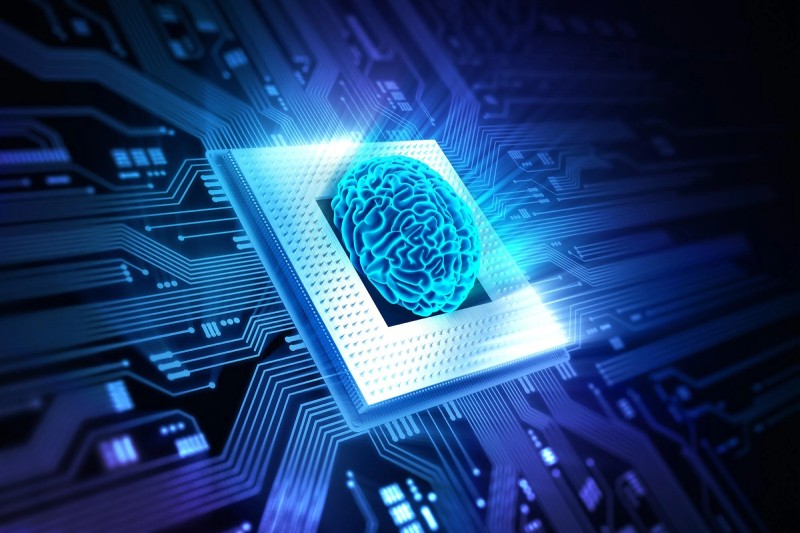To boost the computing power of artificial intelligence (AI), researchers have combined run-of-the-mill machine learning with a sophisticated 3D model of the human brain made of different types of brain tissue grown in the lab.
These miniature models of the brain, known as cerebral organoids or “minibrains,” have existed in various forms since 2013. But they’ve never been harnessed as a way to augment AI.
The new research uses more traditional computing hardware to input electrical data into the organoid and then decipher the organoid’s activity to produce an output — so the organoid serves only as the “middle layer” of the computing process.
Although the technique is far from simulating the actual structure or functioning of the brain, it could offer a first step toward the development of biocomputers, which would use biological trickery to outperform conventional computers in terms of power and energy efficiency. It might also provide further understanding of the functioning of the human brain and the ways in which neurodegenerative diseases like Parkinson’s and Alzheimer’s affect it.
The researchers employed a method known as reservoir computing for the new work, which was published on Monday, December 11, in the journal Nature Electronics. In this instance, the organoid acts as the “reservoir.” In this kind of system, data is stored in the reservoir and is retrieved in response to input. Different inputs cause the reservoir to change, and an algorithm learns to detect these changes and interprets them as its outputs.
The brain organoid was connected to the system by the researchers using this framework, and they did so by feeding it electrical inputs that were given through electrodes.
According to study co-author Feng Guo, an associate professor of intelligent systems engineering at Indiana University Bloomington, “basically, we can encode the information — something like an image or audio information — into the temporal-spatial pattern of electrical stimulation.”
Stated differently, the response of the organoid is contingent upon the spatial distribution and timing of the electrical current emanating from the electrodes. The organoid’s electrical reactions to the stimulation were deciphered by the algorithm.
The brain organoid is essentially a tiny sphere of brain cells, much simpler than an actual brain, yet it can nevertheless respond to stimuli by changing and adapting. The responses of various brain cell types, developing cells, and brain-like structures in the organoid offer a rough analogue to the ways in which our own brains alter in response to electrical inputs. Our capacity for learning is fueled by such brain alterations.
The researchers trained their hybrid algorithm to perform two different kinds of tasks: one connected to speech recognition and the other to mathematics, using this unusual hardware. In the first, the computer was able to identify Japanese vowel sounds from hundreds of audio samples with an accuracy of almost 78%. Additionally, it performed the math assignment fairly accurately, if a little less accurately than more conventional forms of machine learning.
Although this is the first study to use AI with a brain organoid, similar techniques have been employed with less complex varieties of lab-grown neural tissue. For instance, reinforcement learning—a kind of machine learning that may resemble human and other animal learning more than reservoir computing—has been woven into brain tissue by scientists.
Lena Smirnova, an assistant professor of environmental health and engineering at Johns Hopkins University who co-authored a commentary about the current findings, said that future research might try combining brain organoids with reinforcement learning.
Energy efficiency would be one benefit of developing biocomputers, as our brains consume a lot less energy than the sophisticated computing systems of today. However, Smirnova stated that it might take decades before a biocomputer suitable for general use is developed using technology similar to this.
Although organoids aren’t quite as sophisticated as full-fledged human brains, Smirnova believes the technology will help researchers better understand how the brain functions, particularly in conditions like Alzheimer’s. Researchers may be able to gain a better understanding of how the shape of the brain relates to learning and cognition, for example, by using organoids to replicate the structure of the brain and computing to replicate its function.
Similar to organoids in general, Smirnova stated that these computer systems can potentially help replace animal drug testing, which presents moral dilemmas and rarely produces insightful results due to the animals’ significant differences from humans. Closing that gap might be facilitated by using organoids made from human brain tissue in drug testing.
Topics #hybrid computer #minibrain #researchers










